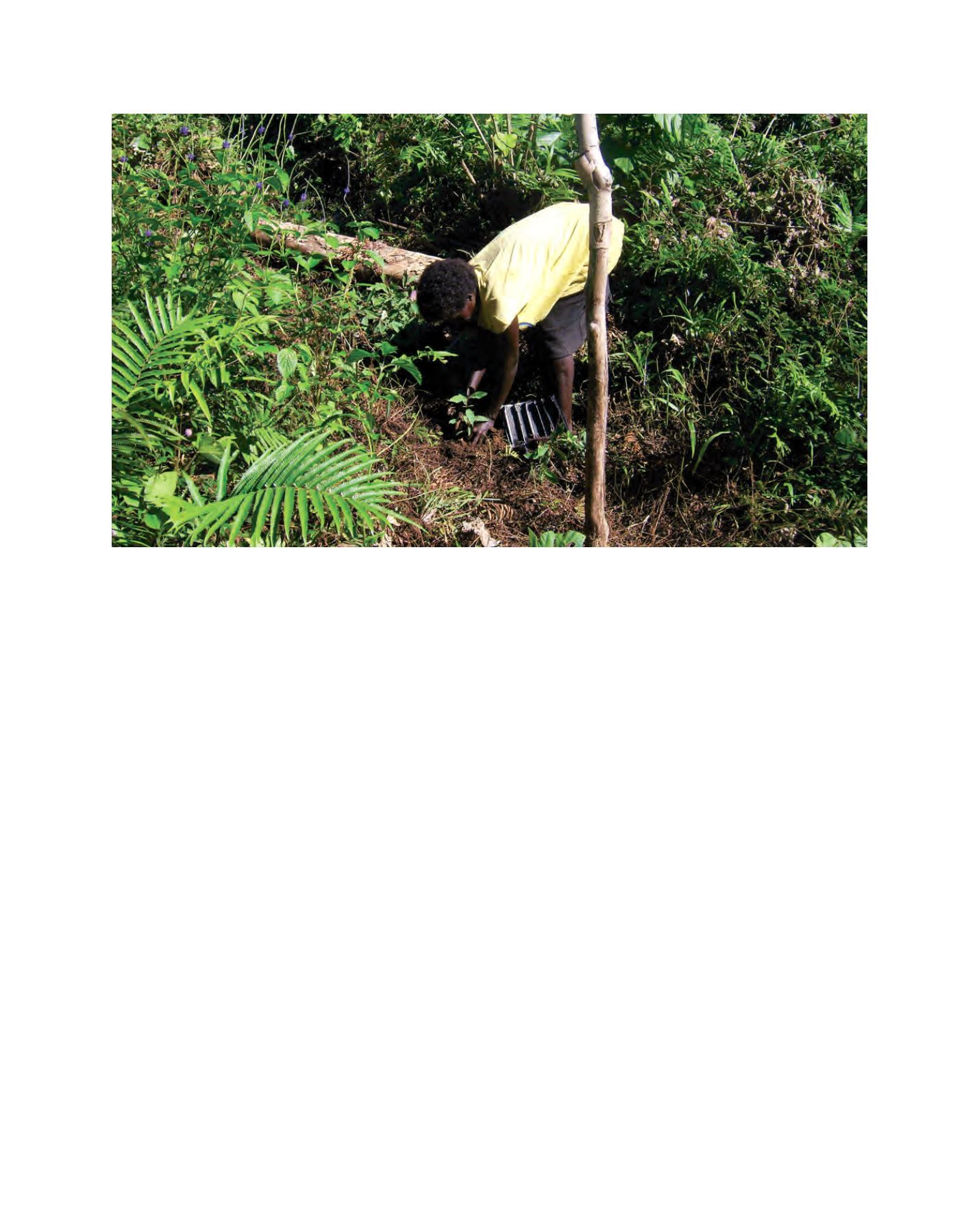

[
] 144
and most investors prefer to invest in plantations established on
marginal agricultural or degraded land.
Investing in forestry may include acquisition of existing plan-
tations or new unplanted (greenfield) plantation licence areas.
In some cases, particularly in Southeast Asia, this may involve
assuming management responsibility for heavily degraded
natural forest with residual biodiversity values. In order to main-
tain, restores, and enhance environmentally sensitive areas, such
as residual natural forest, natural forest cover on steep slopes,
riparian zones, and other high conservation value areas, forest
management plans can be created that intensify production in
the most suitable areas while allowing for conservation-based
management in others. Depending on local circumstances, in
some of the most degraded areas (e.g. non-forest or immature
secondary forests regenerating following agricultural use) inves-
tors may establish fast-growing, high-value hardwood plantations.
By applying this integrated approach that preserves environmen-
tal values and increases productivity, forest management plans
can result in natural forest/plantation mosaic landscapes produc-
ing timber and sustaining high levels of biodiversity over the
long term. Emerging environmental markets for carbon, includ-
ing programmes for Reducing Emissions from Deforestation and
Degradation (REDD) and biodiversity can be used to support
the investment model of intensive timber production combined
with protection of residual natural forest areas. Income from
environmental credits can be used to offset the costs of natural
forest set asides and make the combined production and conser-
vation model commercially attractive to investors. New Forests
believes this environmentally sensitive intensification is essential
for meeting global wood demand while alleviating pressure on
remaining natural forests.
Society and Stakeholders
While institutional investment seeks primarily to
generate returns that meet medium- to long-term
financial liabilities, forestry investment presents
economic opportunities that also reach local stake-
holders, including communities and governments.
This is particularly true in emerging markets, where
natural resource industries play a significant role
in development. Forestry investment in these areas
offers a sustainable development pathway that brings
revenue and livelihoods.
In remote areas and developing countries, rural commu-
nity development is often tightly linked with the health
and use of forest ecosystems. ESG integration can be
useful in ensuring local rights are respected and rein-
forced. Investors can utilize specialized consultants and
established processes such as free, prior and informed
consent and high conservation value area assessments
8
to
help assess and address these local stakeholder needs. For
example, areas that have high cultural significance can be
preserved for the long termwhen incorporated into a land-
scape system that diverts timber production and plantation
development to degraded or less sensitive areas. However,
in some cases local community needs may be incompat-
ible with some types of intensive forestry, and investors
following strong ESG and sustainability guidelines will be
capable of identifying appropriate areas for investment.
Institutional investment also brings funding directly
into local economies and can support livelihoods and
local stakeholders. Employment is created through onsite
operational activities, and regional or local specialist forest
A woman contractor plants a seedling at Kolombangara Forest Products Limited in the Solomon Islands
Image: KFPL
















